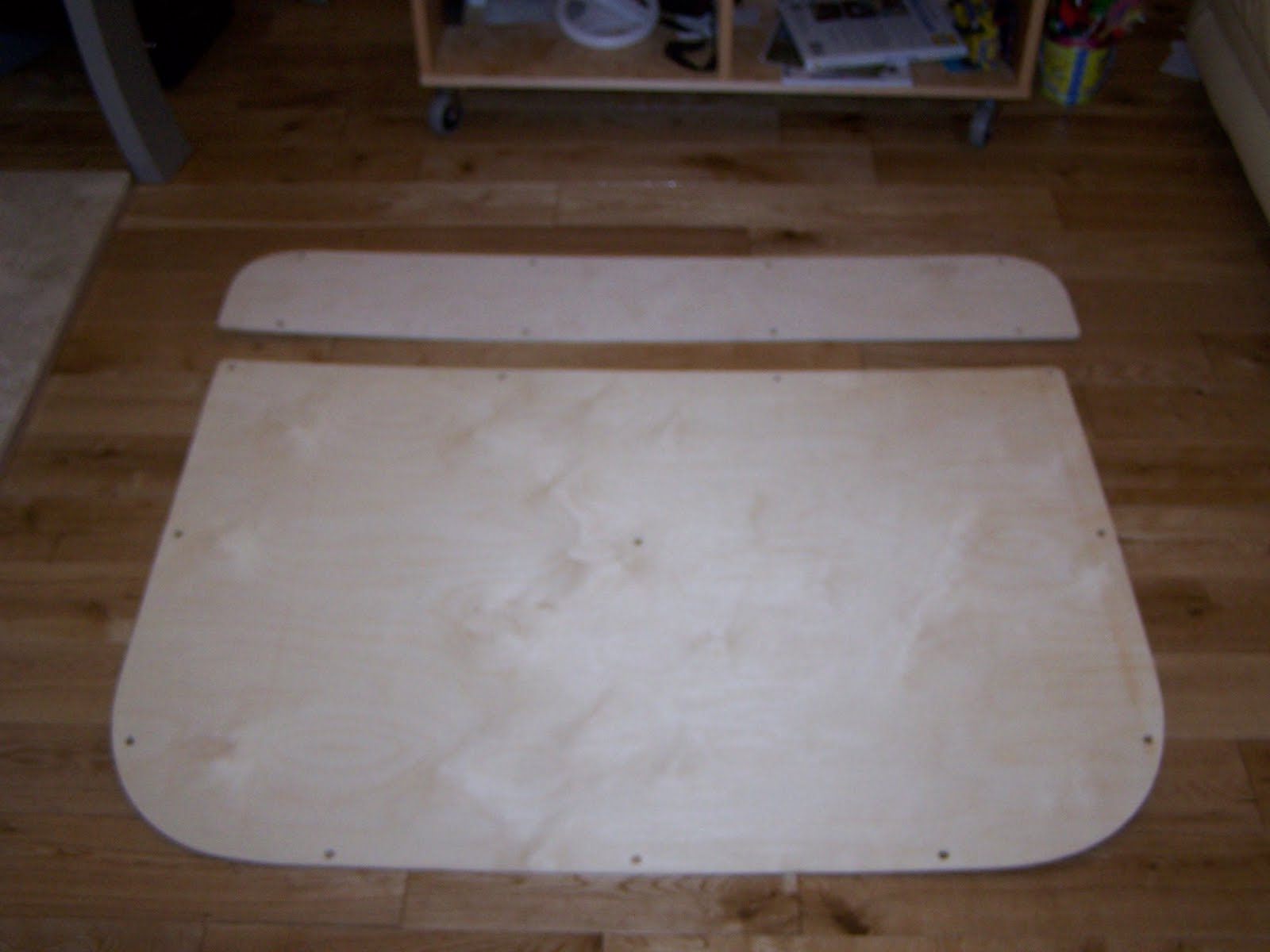Having been woken early by the dawn chorus, I slipped out to the garage and put a coat of varnish on the rear of the panel I prepared last night. I started on the rear firstly because I was worried that the varnish would have too much colour for the wood and secondly because this panel is on the sliding door it is quite likely that it will get wet and I don’t want any water that may seep behind the panel causing it to delamiate.
Interestingly and rather worryingly the varnish was white, however when brushed on and once it starts drying it goes clear. So clear infact that apart from the sheen it gives to the wood, you wouldn’t know it had been treated.
At lunchtime I managed a second coat on the rear of the panel and a further two coats in the front this evening.
In addition to varnishing the bottom panel I also completed cutting the replacement top panel and got one coat of varnish on the rear. I then tried my hand at ‘Tick Sticking’, this a technique used by boat builders to create odd shaped panels, and I used it create a template of the window infill panel for the sliding door.
The technique involves placing a smaller panel in the area to be filled then using a ticking stick to record points arround the edge of the whole to be filled. The ticking stick has a pointed tip and two notches in one side, when recording the point is held against the wall of the hole and the position of the stick recorded on the panel by using the notched sie to draw a line and by placing tick marks at the notch points. The process is then reversed to create the template, the panel is placed on a big sheet of card, the ticking stick is then placed on each of the lines in turn, the ticks and notches aligned and the position of the tip recorded on the card. The point are then joined and hey presto you have a super acurate template to cut the final panel.
Varnish
- Make
- Ronseal
- Model
- Diamond Hard Clear Floor Varnish: Satin Finish
- Supplier
- Focus



You must be logged in to post a comment.